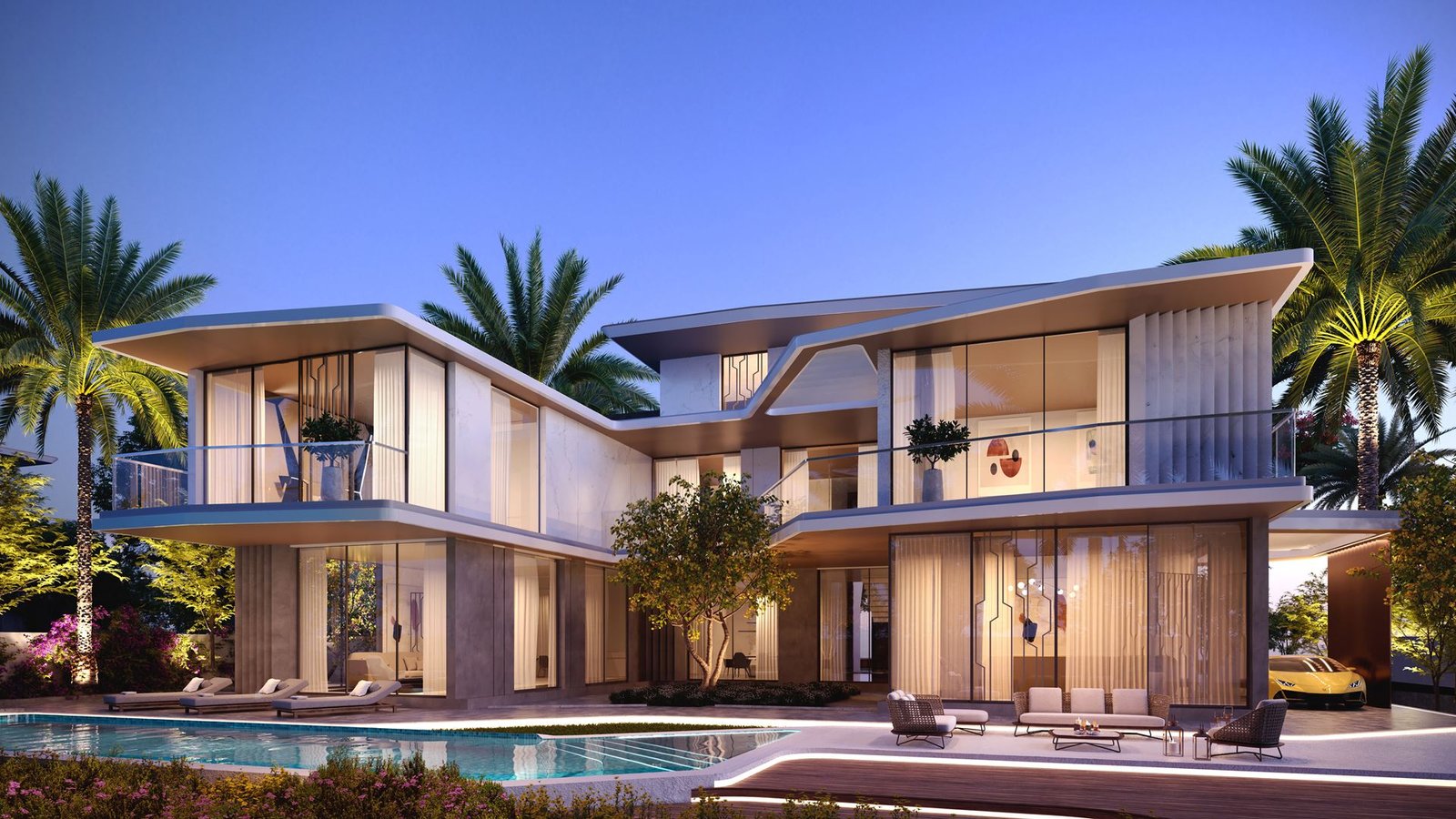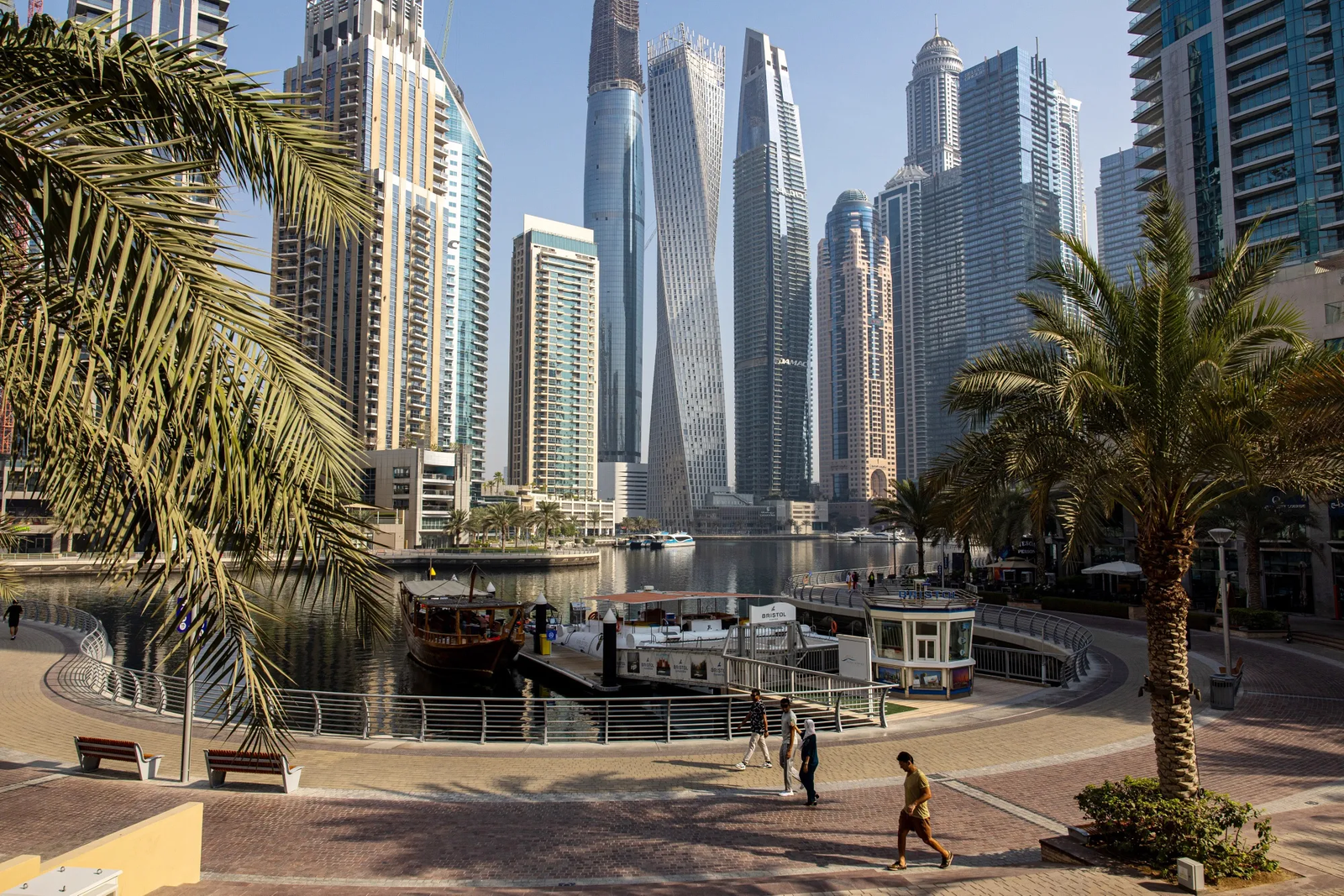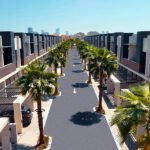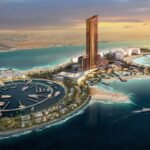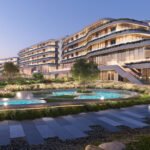Now Reading: Why Dubai Remains the Top Real Estate Market in the Middle East
-
01
Why Dubai Remains the Top Real Estate Market in the Middle East
Why Dubai Remains the Top Real Estate Market in the Middle East
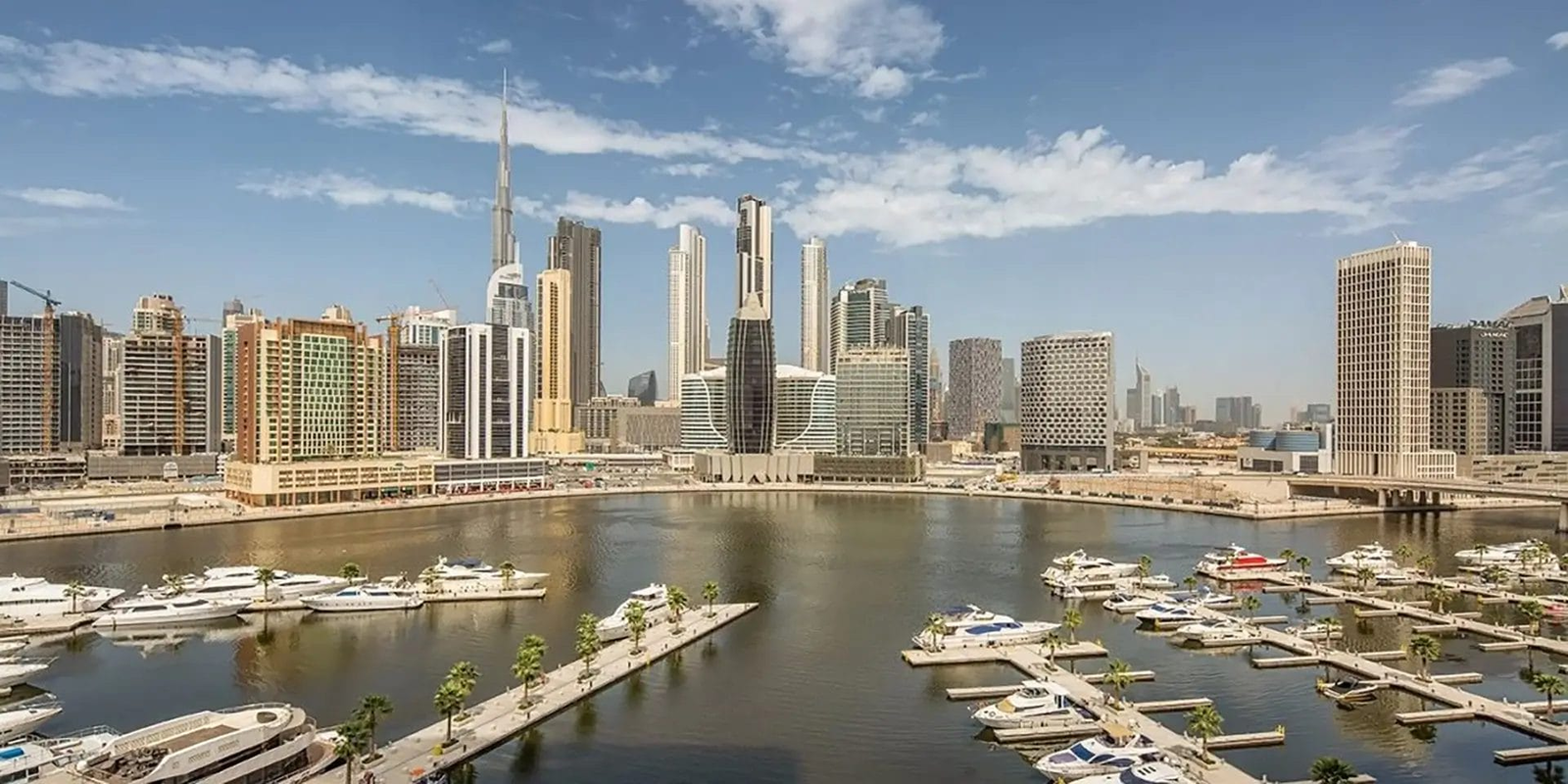
Table of Contents
Imagine stepping into your Dubai home, where a soft voice command lifts the blinds to reveal a golden sunrise over a serene lagoon, your coffee brews automatically, and expansive windows frame a vibrant community plaza or a tranquil skyline. You start your day with a yoga session in a lush pavilion, feeling the heartbeat of a city that’s redefining real estate in the Middle East. In August 2025, Dubai’s real estate market is thriving with communities like Dubai Hills Estate, Tilal Al Ghaf, and Palm Jumeirah, each blending luxury, wellness, and innovation to attract global buyers.
With 96,000 transactions worth $87 billion in the first half, up 15% from 2024, and 55% of buyers from the UK, India, Russia, and China, Dubai outshines other Middle Eastern markets like Abu Dhabi or Riyadh. Offering 100% freehold ownership, a dirham pegged to the U.S. dollar, and no personal income tax, capital gains tax, or annual property taxes, properties priced from $500,000 to $5 million deliver 5-7% rental yields and 7-10% price appreciation, outpacing regional averages.
Properties over $545,000 qualify for a 10-year Golden Visa, while those at $204,000 grant 2-year residency. Fueled by 25 million tourists and a 4% population surge, Dubai’s market is a regional leader. Navigating fees, VAT, and 2025 regulations is your key to securing a radiant investment in the Middle East’s top real estate hub.
Tax Advantages Setting Dubai Apart in the Region
Dubai’s tax-friendly environment is a cornerstone of its dominance in the Middle East, offering perks that outshine neighbors like Saudi Arabia or Qatar. With no personal income tax, a $1 million Dubai Hills Estate apartment yields $50,000-$70,000 annually, tax-free, saving $18,500-$31,500 compared to taxed markets. Selling for $1.1 million (10% appreciation) delivers a $100,000 tax-free profit, saving $20,000-$28,000 versus capital gains in other regions.
No property taxes save $10,000-$50,000 yearly, unlike annual levies elsewhere in the Gulf. Residential purchases skip 5% VAT ($25,000-$250,000), and these advantages attract 55% of buyers from international markets, making Dubai the preferred choice for high-ROI investments in the Middle East.
Dubai’s tax perks feel like a warm embrace for investors seeking regional prosperity.
Golden Visa and Residency Boosting Appeal
Dubai’s Golden Visa program, offering 10-year residency for properties over $545,000, sets it apart from stricter residency rules in other Middle Eastern markets. A $1 million Tilal Al Ghaf villa qualifies, providing family sponsorship and business setup benefits. Smaller properties at $204,000 offer 2-year residency, appealing to entry-level global buyers. With 7-10% price growth and 85-90% occupancy, these perks draw buyers from the UK and India, who value long-term stability. Unlike limited visa options in Abu Dhabi or Riyadh, Dubai’s program fuels its real estate dominance, making it a top regional choice.
The Golden Visa feels like a golden key unlocking Dubai’s radiant future.
Wellness and Sustainability Leading Regional Trends
Dubai’s focus on wellness and sustainability outpaces other Middle Eastern markets, with communities like The Sustainable City offering net-zero villas with solar panels and wellness gardens. These $500,000-$2 million properties yield $25,000-$100,000 annually, tax-free, and attract eco-conscious buyers from Europe and China. Compared to less integrated sustainability in Riyadh or Doha, Dubai’s projects drive 7-10% price growth and high demand. Maintenance fees ($5,000-$10,000) cover urban farms and eco-trails, with a 5% municipality fee ($1,250-$5,000) on rentals. This trend positions Dubai as the Middle East’s leader in health-focused real estate.
Dubai’s wellness communities feel like a vibrant breath of fresh air in the region.
Dubai Hills Estate: Urban Luxury for High Returns
Emaar’s Dubai Hills Estate, located 10-15 minutes from DIFC, is a 2025 standout with villas and apartments featuring smart air purifiers, biophilic interiors, and wellness parks with yoga studios and green trails. Priced at $500,000-$3 million, these properties yield $25,000-$150,000 annually, tax-free, saving $9,250-$67,500 compared to the U.S. or UK.
Selling a $1 million home for $1.1 million (10% appreciation) nets a $100,000 tax-free profit, saving $20,000-$28,000 versus London (20-28%) or New York (20-37%). No property taxes save $5,000-$30,000 yearly, unlike London’s council tax (up to 2%) or New York’s property tax (1-2%). Residential purchases skip 5% VAT ($25,000-$150,000), and amenities like meditation gardens drive 7-10% price growth. With 85-90% occupancy, this zone attracts GCC and UK buyers, fueling Dubai’s market growth with urban luxury and wellness.
Dubai Hills Estate feels like a vibrant, smart sanctuary for thriving wealth.
Tilal Al Ghaf: Smart Wellness for Maximum ROI
Majid Al Futtaim’s Tilal Al Ghaf, 20 minutes from Dubai Marina, is unveiling a 2025 phase of smart villas with AI-driven climate control, air purifiers, and lagoon-side wellness hubs with mindfulness pavilions. Priced at $500,000-$5 million, these properties yield $25,000-$350,000 annually, tax-free, saving $9,250-$157,500. Short-term rentals, boosted by 25 million tourists, require a DTCM license ($408-$816), increasing yields by 10-15% ($2,500-$52,500). Long-term leases need Ejari registration ($54-$136).
Non-compliance risks fines up to $13,612. With IoT-enabled fitness zones and sustainable retail, these homes drive 85-90% occupancy and 7-10% price growth, delivering a 7-10% ROI. A 4% DLD fee ($20,000-$200,000), often split, applies, but zero capital gains tax saves $20,000-$200,000 on $100,000-$1 million profits. Indian and Russian buyers flock to this tech-wellness gem, making it a leader for ROI in 2025.
Tilal Al Ghaf feels like a vibrant, smart sanctuary for thriving wealth.
The Sustainable City: Eco-Wellness with Strong Returns
The Sustainable City, by SEE Holding, 30 minutes from Downtown Dubai, is expanding in 2025 with net-zero villas featuring solar panels, water recycling systems, and community wellness gardens with yoga pavilions. Priced at $500,000-$2 million, these properties yield $25,000-$100,000 annually, tax-free, saving $9,250-$45,000. Selling a $1 million home for $1.1 million yields a $100,000 tax-free profit, saving $20,000-$28,000. No property taxes save $5,000-$20,000 yearly, and VAT exemptions save $25,000-$100,000. Maintenance fees ($5,000-$10,000) cover urban farms and eco-friendly amenities, with a 5% municipality fee ($1,250-$5,000) on rentals. With 7-10% price growth, 85-90% occupancy, and a 7-10% ROI, this zone attracts European and GCC buyers, positioning it as a top eco-wellness investment for 2025.
The Sustainable City feels like a radiant, green oasis for sustainable profits.
No Personal Income Tax: Boosting ROI for Investors
Dubai’s no personal income tax policy is a game-changer, letting investors keep 100% of rental income for maximum ROI. A $500,000 Sustainable City villa yields $25,000-$35,000, saving $9,250-$15,750 compared to the U.S. or UK; a $5 million Tilal Al Ghaf villa yields $250,000-$350,000, saving $112,500-$157,500. Short-term rentals require a DTCM license ($408-$816), boosting yields by 10-15%. Long-term leases need Ejari registration ($54-$136). A 5% municipality fee ($1,250-$17,500) applies, but non-compliance risks fines up to $13,612. Wellness and smart amenities like yoga pavilions and IoT fitness zones ensure 85-90% occupancy, making tax-free income a key reason these communities offer the best ROI in 2025.
Tax-free rentals feel like a refreshing wave of financial prosperity.
Zero Capital Gains Tax: Maximizing Investment Gains
Zero capital gains tax ensures investors keep 100% of sale profits, amplifying ROI in these communities. Selling a $1 million Dubai Hills Estate home for $1.1 million yields a $100,000 tax-free profit, saving $20,000-$28,000 versus London or New York. A $5 million Tilal Al Ghaf property sold for $5.5 million delivers a $500,000 tax-free gain, saving $100,000-$140,000. With 7-10% price growth fueled by wellness and sustainability, these properties outperform global markets, delivering a 7-10% ROI. A 4% DLD fee ($20,000-$200,000), often split, applies, but tax-free profits make these communities wealth-preserving hubs for savvy investors.
Keeping every dirham feels like a radiant triumph of smart investing.
No Annual Property Taxes: Simplifying High Returns
No annual property taxes save $5,000-$50,000 yearly on $500,000-$5 million properties, unlike London’s council tax ($3,000-$30,000) or New York’s property tax (1-2%). Maintenance fees ($5,000-$25,000) cover wellness hubs, smart security, and eco-friendly spaces, keeping costs low. A 5% municipality fee on rentals ($1,250-$17,500) is reasonable, with high occupancy from amenities like fitness trails and meditation gardens. This simplicity boosts ROI, making these communities attractive to global investors seeking hassle-free returns in 2025.
No property taxes feel like a gentle breeze easing your investment journey.
VAT Rules: A Strategic Financial Advantage
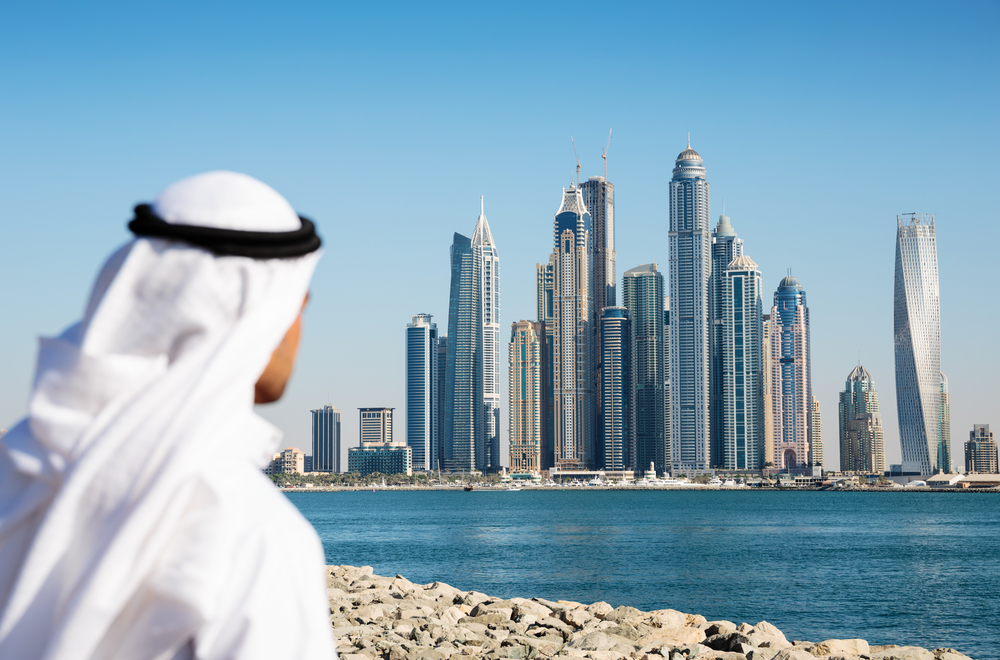
Residential purchases skip 5% VAT, saving $25,000-$250,000 on $500,000-$5 million properties, unlike commercial properties or the UK’s stamp duty (up to 12%). Off-plan purchases incur 5% VAT on developer fees ($2,500-$25,000), recoverable via Federal Tax Authority (FTA) registration ($500-$1,000). Short-term rental operators register for VAT if revenue exceeds $102,041, charging 5% but claiming credits on DTCM fees ($408-$816). A $500,000 home yielding $25,000-$35,000 incurs $1,250-$1,750 in VAT, with $400-$600 in credits. Non-compliance risks fines up to $13,612, so diligent record-keeping is crucial for maximizing ROI in these communities.
VAT exemptions feel like a clever boost to your financial strategy.
DLD Fees and Title Deeds: Securing Your Investment
The 4% DLD fee, typically split, applies: $20,000 for a $500,000 home or $200,000 for a $5 million villa. Gift transfers to family reduce DLD to 0.125%, saving $19,375-$193,750. Title deed issuance costs $136-$272, requiring DLD registration. Broker fees (2%, $10,000-$100,000) may be waived for off-plan projects like The Sustainable City. Mortgage registration (0.25% of loan, $1,250-$12,500) and valuation fees ($680-$1,360) apply for financed deals. The 2025 Oqood system ensures escrow compliance for off-plan purchases, securing investments in these high-ROI communities.
Title deeds feel like the key to your radiant, prosperous investment.
Corporate Tax: Navigating Business Investments
Introduced in 2023, the 9% corporate tax applies to profits over $102,110. A $500,000 home yielding $25,000-$35,000 incurs no tax. A $5 million villa yielding $250,000-$350,000 incurs $22,500-$31,500, reducing net income to $227,500-$318,500. Qualified Free Zone Person (QFZP) status in areas like DMCC avoids this, saving $22,500-$31,500, with setup costs of $2,000-$5,000. Small business relief waives tax for revenues under $816,000 until December 31, 2026. Individual ownership skips this tax, ideal for most investors in these high-ROI communities.
Corporate tax feels like a navigable ripple in your investment strategy.
New Tax Rules for 2025
The Domestic Minimum Top-up Tax (DMTT), effective January 1, 2025, imposes a 15% tax on multinationals with revenues over €750 million ($793 million). Individual investors and smaller entities are unaffected, and QFZP status avoids DMTT, saving $3,750-$52,500. Cabinet Decision No. 34 refines Qualifying Investment Fund (QIF) rules, exempting corporate tax if real estate income is below 10%. A QIF earning $1 million, with $100,000 from rentals, faces 9% tax ($8,100) on 90% ($900,000). A July 2025 policy allows corporate tax deductions on fair market value depreciation, saving $909-$9,091 annually for a $500,000 home revalued at $550,000. These rules enhance the appeal of Dubai’s high-ROI communities.
New tax rules feel like a puzzle with prosperous investment solutions.
Top Communities for Best ROI in 2025
1. Dubai Hills Estate: Urban Wellness Leader
Dubai Hills Estate ($500,000-$3 million), by Emaar, offers 5-7% yields and 7-10% price growth, delivering a 7-10% ROI with yoga studios and fitness trails. A $1 million home yields $50,000-$70,000 tax-free, saving $18,500-$31,500. Selling for $1.1 million yields a $100,000 tax-free profit, saving $20,000-$28,000. No property taxes save $5,000-$30,000, and VAT exemption saves $25,000-$150,000. Maintenance fees are $5,000-$15,000, with a 5% municipality fee ($2,500-$3,500). QFZP saves $4,500-$6,300. U.S. investors deduct depreciation ($9,091-$27,273), saving up to $9,545. Its urban wellness allure draws GCC and UK buyers.
Dubai Hills Estate feels like a radiant, high-return urban masterpiece.
2. Tilal Al Ghaf: Smart Wellness Innovator
Tilal Al Ghaf ($500,000-$5 million), by Majid Al Futtaim, offers 5-7% yields and 7-10% price growth, delivering a 7-10% ROI with mindfulness pavilions and sustainable retail. A $1 million villa yields $50,000-$70,000 tax-free, saving $18,500-$31,500. Selling for $1.1 million yields a $100,000 tax-free profit, saving $20,000-$28,000. No property taxes save $5,000-$50,000, and VAT exemption saves $25,000-$250,000. Maintenance fees are $5,000-$25,000, with a 5% municipality fee ($2,500-$3,500). QFZP saves $4,500-$6,300. U.S. investors deduct depreciation ($9,091-$45,455), saving up to $15,909. Its smart wellness vibe draws Russian and Indian buyers.
Tilal Al Ghaf feels like a vibrant, innovative profit haven.
3. The Sustainable City: Eco-Wellness Champion
The Sustainable City ($500,000-$2 million), by SEE Holding, offers 5-7% yields and 7-10% price growth, delivering a 7-10% ROI with net-zero villas and urban farms. A $1 million home yields $50,000-$70,000 tax-free, saving $18,500-$31,500. Selling for $1.1 million yields a $100,000 tax-free profit, saving $20,000-$28,000. No property taxes save $5,000-$20,000, and VAT exemption saves $25,000-$100,000. Maintenance fees are $5,000-$10,000, with a 5% municipality fee ($2,500-$3,500). QFZP saves $4,500-$6,300. U.S. investors deduct depreciation ($9,091-$18,182), saving up to $6,364. Its eco-wellness allure draws European and GCC buyers.
The Sustainable City feels like a radiant, green oasis for sustainable profits.
Why These Communities Offer the Best ROI
Price Range: The Sustainable City ($500,000-$2 million) and Dubai Hills Estate ($500,000-$3 million) suit mid-tier buyers; Tilal Al Ghaf ($500,000-$5 million) attracts affluent investors.
Rental Yields: 5-7%, with Tilal Al Ghaf at 5-7% for short-term rentals; others at 5-6% for stable leases.
Price Appreciation: 7-10%, driven by wellness, sustainability, and smart tech trends.
Lifestyle: Smart systems, wellness hubs, and green spaces create vibrant living.
Market Drivers: Golden Visas, tax-free income, and high occupancy fuel returns.
ROI Verdict: 7-10% ROI, blending lifestyle with exceptional financial rewards.
Investing here feels like embracing a radiant, high-return opportunity.
Strategies to Maximize ROI
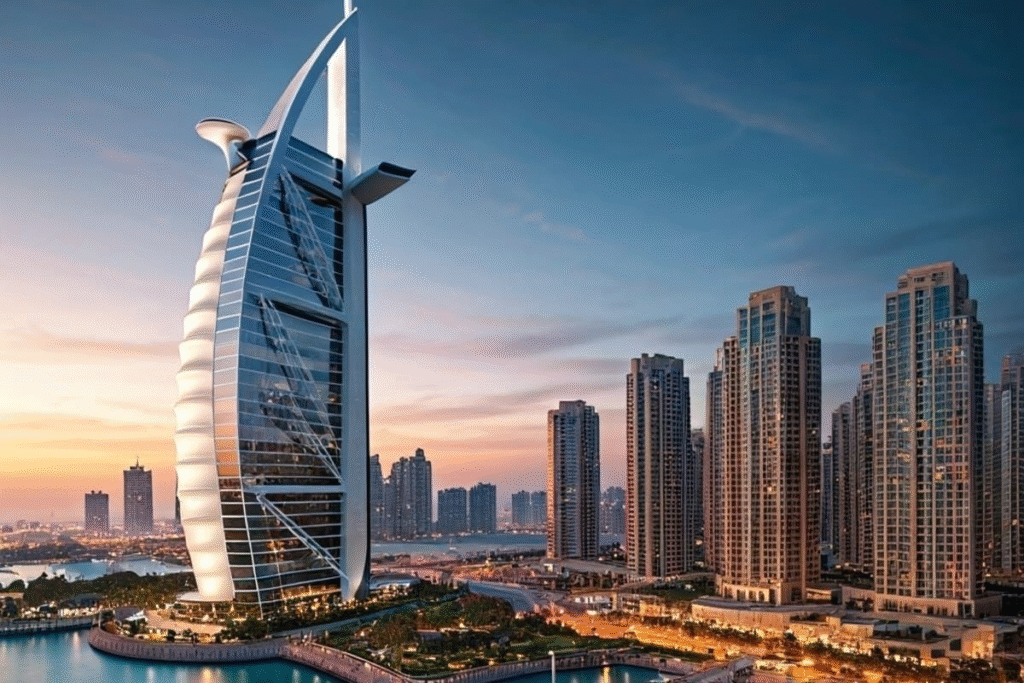
For individuals: Hold properties personally to avoid corporate taxes, saving $2,700-$31,500. Negotiate DLD fee splits, saving $10,000-$100,000. Use gift transfers to reduce DLD to 0.125%, saving $19,375-$193,750. Recover 5% VAT on developer fees via FTA registration ($500-$1,000). Leverage double taxation treaties with 130+ countries, saving $9,250-$157,500. U.S. investors deduct depreciation ($9,091-$45,455), saving up to $15,909. For corporates: Secure QFZP status, keep QIF income below 10%, and claim depreciation deductions. Hire property managers ($5,000-$25,000 annually) and tax professionals ($1,000-$3,000) to avoid fines up to $13,612. Focus on short-term rentals in Tilal Al Ghaf, long-term in The Sustainable City.
These strategies feel like a roadmap to your vibrant, prosperous investment.
Risks to Watch in 2025
A projected oversupply of 182,000 units by 2026 may slightly slow price growth in newer Tilal Al Ghaf phases, but Dubai Hills Estate and The Sustainable City remain resilient due to wellness and sustainability demand. Off-plan delays risk setbacks, so choose trusted developers like Emaar or SEE Holding and verify escrow compliance via the 2025 Oqood system. Non-compliance with VAT or DTCM rules risks fines up to $13,612, and corporate tax errors can cost $13,612. Indian investors must report properties in India’s Foreign Asset schedule to avoid $135,000 penalties. Currency fluctuations, though minimal with the dollar peg, could impact returns.
Why These Communities Lead in ROI
With 7-10% ROI, 7-10% growth, and tax-free savings of $5,000-$250,000 annually, Dubai’s top communities Dubai Hills Estate, Tilal Al Ghaf, and The Sustainable City offer vibrant residences, wellness-focused amenities, and unmatched financial rewards. Golden Visa perks, 85-90% rental occupancy, and innovative designs make them 2025’s best ROI destinations. Navigate fees, secure your radiant investment, and thrive in Dubai’s dynamic, high-return market.
read more: Dubai Real Estate Trends: Where Families Prefer to Buy Homes



